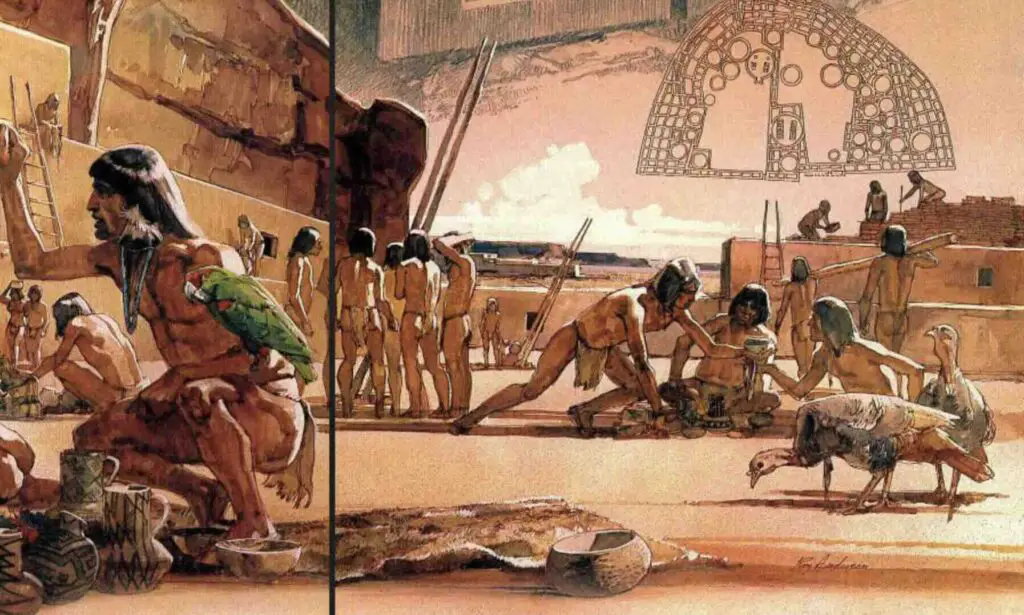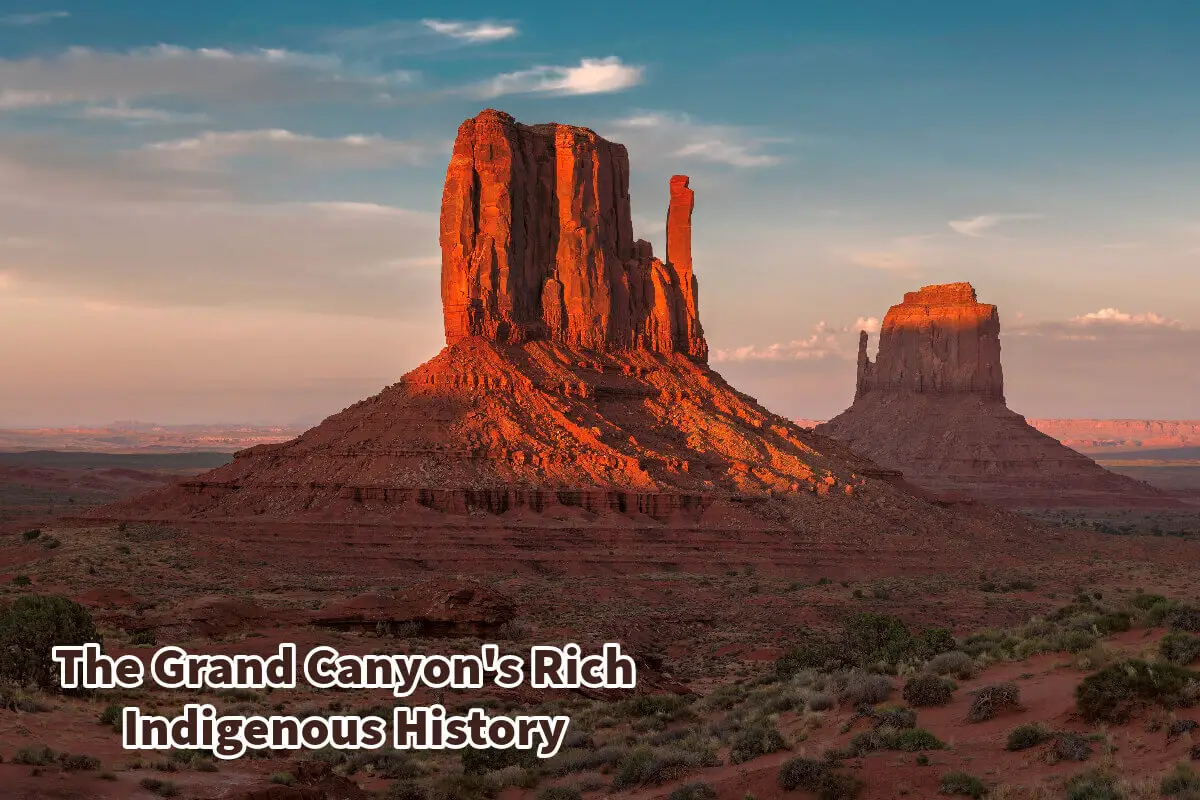The Grand Canyon is a magnificent place to visit and has a rich history. One of the essential aspects of its history is the indigenous people’s history.
The Grand Canyon, one of the world’s most iconic landmarks, is a geological wonder and a repository of deep-rooted Indigenous history. This vast chasm holds the stories of ancient civilizations, tribal migrations, and the continued struggle for rights and recognition.
Table of Contents
- The Ancient Inhabitants: A Timeline Spanning Millennia
- The Grand Canyon’s Modern Indigenous Inhabitants
- 10 Compelling Reasons To Visit The Grand Canyon
- Related Questions
The Ancient Inhabitants: A Timeline Spanning Millennia
Archaeologists have found evidence that humans have lived in and around the Grand Canyon for approximately 10,000 years. One of the earliest known groups to reside within the canyon’s boundaries was the Ancestral Puebloan people, commonly called the Anasazi.

Their history in the region dates back to around 200 B.C. when they migrated from the Four Corners region towards the Grand Canyon.
The Anasazi were resourceful, adapting to the canyon’s challenging environment and utilizing its resources. Structures like the Anasazi Granary carved meticulously into the Redwall Limestone near the Nankoweap Trail, stand testament to their advanced storage techniques.
These granaries, which served as storage for seeds and food, can still be visited today, offering a tangible link to the ancient past.
However, the reasons remain unclear why, around A.D. 1110, the Anasazi civilization saw a decline, leaving behind their settlements and rich heritage.
Shifting Sands: The Arrival Of New Tribes And The Grand Canyon
Following the Anasazi’s mysterious departure, other Native American tribes made the Grand Canyon their home. They adapted to the challenging landscape, moving seasonally between the inner canyon’s depths and the upper plateau.
But the peace and harmony they experienced would be short-lived.
The mid-1800s brought settlers westward, fueled by dreams of wealth and new beginnings. With their arrival came intense conflicts, wars, forced relocations, and land exploitation. As miners dug deep, searching for gold, silver, and other minerals, the indigenous tribes faced monumental challenges.
Historically, treaties drafted by the U.S. government rarely favored the Native Americans. They were often forced to surrender their ancestral land and relocate to unfamiliar territories, causing economic and cultural hardships that lingered for centuries.
To provide context, Donald L. Fixico, a noted history professor, highlighted that out of 374 U.S.-Indian treaties, a staggering 229 resulted in tribes relinquishing their lands.
The Grand Canyon’s Modern Indigenous Inhabitants
Today, the Grand Canyon is home to reservations of the Havasupai and Hualapai tribes. Additionally, the canyon holds spiritual significance for the Navajo, Hopi, Paiute, and Zuni, who regard it as their place of emergence.

Despite the proximity of the Navajo, Havasupai, and Hualapai reservations to the Grand Canyon National Park, historical boundary delineations by federal authorities often marginalized these tribes, disregarding their ancestral claims.
But the tides began to turn in the 1970s. With a shift towards supporting tribal self-determination, the Grand Canyon Enlargement Act of 1975 saw the return of vast tracts of land to the indigenous tribes.
By the 1990s, tribes were gradually included in park management decisions, marking a significant departure from previous exclusionary practices.
This inclusion also brought challenges. While it laid the foundation for increased tourism in the Grand Canyon, there were concerns of hyper-exploitation, with the delicate balance between cultural preservation and commercial interests continually tested.
The Grand Canyon’s magnificent layers tell stories of geological transformations, civilizations, migrations, struggles, and resilience. The Indigenous tribes, with their rich histories and unwavering spirit, remain intrinsically linked to this awe-inspiring landscape, reminding us that the canyon is more than just a natural wonder—it’s a tapestry of human history and endeavor.
10 Compelling Reasons To Visit The Grand Canyon
The Grand Canyon, a UNESCO World Heritage Site and one of the Seven Natural Wonders of the World stands as a testament to the relentless forces of nature and the beauty they can sculpt over millennia. If you’re contemplating a visit, here are ten compelling reasons why the Grand Canyon is an absolute must-see:

1. A Geological Marvel:
The Grand Canyon offers a visual journey through time, with layers of rock that chronicle the Earth’s history over two billion years. The canyon walls’ myriad colors, textures, and formations tell tales of geological processes that shaped our planet.
2. Breathtaking Sunrises And Sunsets:
The interplay of light and shadow during dawn and dusk paints the canyon in gold, pink, and purple hues, offering a surreal and unforgettable visual experience.
3. Unique Flora And Fauna:
The Grand Canyon is home to many plants and animals, many of which are found nowhere else on Earth. From the majestic California condor to the tiny pink rattlesnake, the canyon is a living ecosystem waiting to be explored.
4. Adventure Opportunities:
For the thrill-seekers, the canyon offers white-water rafting, backcountry hiking, and mule rides down steep trails. There’s no shortage of adrenaline-pumping activities here.
5. Cultural And Historical Insights:
The canyon holds deep cultural significance for many Indigenous tribes. Through guided tours and interpretive programs, visitors can gain insights into the rich histories and traditions of the native peoples.

6. Educational Value:
Whether you’re a geology enthusiast, a history buff, or simply curious, the Grand Canyon provides a wealth of knowledge. Park rangers often hold talks and workshops, allowing visitors to deepen their understanding of this natural wonder.
7. Stargazing:
With clear skies and minimal light pollution, the Grand Canyon offers some of the best stargazing opportunities. The Milky Way stretches across the sky on a clear night and countless stars twinkle above.
8. Challenging Hikes And Panoramic Views:
Trails like the Bright Angel and South Kaibab offer varying difficulty levels for hikers, each providing spectacular panoramic views of the canyon’s expanse.
9. Serenity And Reflection:
The Grand Canyon is a place of peace away from the urban hustle. The vastness of the landscape, the sound of the wind, and the sheer magnitude of nature’s beauty offer a perfect setting for introspection and relaxation.
10. A Universal Attraction:
Regardless of age, nationality, or interest. Its universal appeal has drawn visitors from around the globe for generations.
The Grand Canyon is not just a destination; it’s an experience. Its grandeur and beauty, coupled with the myriad activities and learning opportunities it offers, make it an unparalleled attraction.
The Grand Canyon is worth adding to your travel bucket list if you’ve never been. If you’ve visited before, the canyon’s ever-changing landscapes and the emotions they evoke will always beckon for a return.
At A Bus On A Dusty Road, we talk about travel, life, and ex-pat living. We are all about “Living Life As A Global Citizen.” We explore social, cultural, and economic issues and travel.
We would love to have you be part of our community. Sign up for our newsletter to keep up-to-date by clicking here. If you have any questions, you can contact me, Anita, by clicking here.
Listen to our Podcast called Dusty Roads. You can find it on all major podcast platforms. Try out listening to one of our podcasts by clicking here.
Subscribe to our A Bus On A Dusty Road YouTube Channel filled with great videos and information by clicking here.
Related Questions
What Are Some Lessons On Community Support from The Mongolian Nomadic Herders?
The Mongolian nomadic herders in the Gobi Desert taught me six important lessons about our community support importance. I learned some important lessons about working together as a group and supporting our neighbors while also building a support team that will always be there for us – especially in our time of need. For this to happen, we must each be willing to serve in our communities and work together.
You can discover more by reading our blog 6 Lessons On Community Support from The Mongolian Nomadic Herders by clicking here.
Who Are the Gobi Desert Mongolian Herders Who Use Dirt Bikes?
The Mongolian nomadic family we stayed with had dirt bikes to round up their herds; the husband and wife were University graduates. They choose to live the life of a nomadic herder. They also believed in using as much modern technology as possible, as they had everything from cell phones to computers and television that got decent reception. They had solar panels around the yurt (ger) campsite to charge and use all these electrical appliances.
You can learn more by reading our blog Gobi Desert Mongolian Nomads and their Dirt Bikes by clicking here.
Is It Safe To Visit Mongolia?
Mongolia is generally safe to visit, but there are specific safety precautions that you should take when you are traveling in Mongolia for any traveler. There are areas in the city you should be extra cautious when traveling. Also, if you are out in the countryside, there are safety concerns you need to be aware of.
You can find out more by reading our blog, Is It Safe To Visit Mongolia? Staying Safe While Traveling Mongolia by clicking here.

